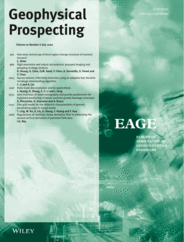
Full text loading...
As an advanced real‐time monitoring technique, microseismic source‐location imaging provides valuable information during hydraulic fracturing, for example, the development of fracture networks and the effective reservoir reconstruction volume. However, microseismic data always suffer from weak induced energy and susceptibility to noise interference. In the case of a low signal‐to‐noise ratio, it is extremely challenging to perform robust microseismic imaging. Here, we first introduce several state‐of‐the‐art imaging conditions and two hybrid imaging conditions, which are followed by a detailed analysis of the impact of different grouping strategies. Then, we briefly analyse the sensitivity of different imaging conditions to noise using a one‐dimensional signal. Next, several benchmark models, including two‐dimensional Marmousi‐II and three‐dimensional SEG Advanced Modeling, are used as numerical examples for testing the passive‐source imaging algorithms. Finally, three‐dimensional real microseismic data are used to further investigate the impact of the grouping strategy on the imaging. The numerical examples and field data demonstrate the effectiveness of the proposed grouping strategy for the grouped imaging conditions.

Article metrics loading...

Full text loading...
References


Data & Media loading...

